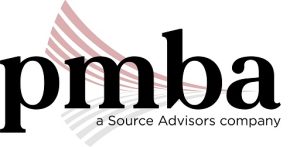The COVID-19 crisis has companies more eager than ever to squeeze every dollar out of their organizations to help with massive cash flow deficits. Here are three strategies that many companies can implement today to increase cash flow immediately.
Federal and State R&D Tax Credits
Value: 10% – 15% of your qualified R&D Spend
For many companies, 2019 was a banner year with the strongest US economy in decades. This has resulted in substantial tax liabilities and executives scrambling for ideas to reduce that cost. The Federal R&D tax credit program is one of the most overlooked credits available to companies in many, many industries. Long thought of as a credit that only applied to pharmaceutical and research companies, the R&D tax credits can actually apply to many industries such as software, manufacturing, architecture, and engineering, as well as the traditional sectors of high-tech, biotech, and pharma. In addition to the Federal credit, many states have a companion credit. For start-ups with no tax liability in 2019, you may qualify for the refundable payroll tax credit, which can be converted to cash within 60 – 90 days. Credits should be documented and filed for on a contemporaneous basis. However, if you qualify, you may be able to amend prior-year tax returns for up to three years.
Cost Segregation Study
Value: Accelerate $50K of deductions for every $1M in Depreciable Property
A cost segregation study allows companies to classify real and personal property from longer lives depreciated over a straight-line method to short lives that qualify for 100% bonus deprecation – resulting in an immediate deduction. Many companies assume that their CPA has appropriately classified their property. However, CPAs can be limited with the information provided to them for making these determinations. In many cases, the IRS requires a study to classify property from a 39-year straight-line method to 5-year accelerated depreciation. For properties that have been held for a period of 3 – 5 years, companies can recognize a ‘catch-up’ of the accelerated deprecation and generate large deductions for the 2019 tax year. A cost segregation study can also be done on many 1031-exchange properties. Applying a cost segregation study to your assets will have an immediate reduction in your 2019 taxable income.
Sales Tax Recovery
Value: $100K in refunds for every $100M in purchases
Sales tax rules are a complicated web of regulations that vary from state to state. Thousands of exemptions exist for businesses to apply against their purchases that most companies are not aware of. This is not a refund of the sales tax you collect from your customers, but refunds of sales tax overpaid on your purchases. Many factors in recent years have caused most companies to overpay sales & use tax on their purchases. A proper analysis of all a company’s purchases can result in substantial refunds. These refunds are secured from the vendors or the individual states. These projects are completed on a contingent basis with minimal resources required from your company. In some instances, credits or refunds can be recovered from vendors within 30 days. For large companies with sophisticated tax departments, don’t assume this is being completed by your team. A typical sales tax recovery project combines large sets of data, with years of business intelligence to review over 90% of your companies spend. Internal tax departments do not have access to such technology or resources.
If you are interested in learning more about any of these tax strategies, please contact us at info@pmba.com for more information.
